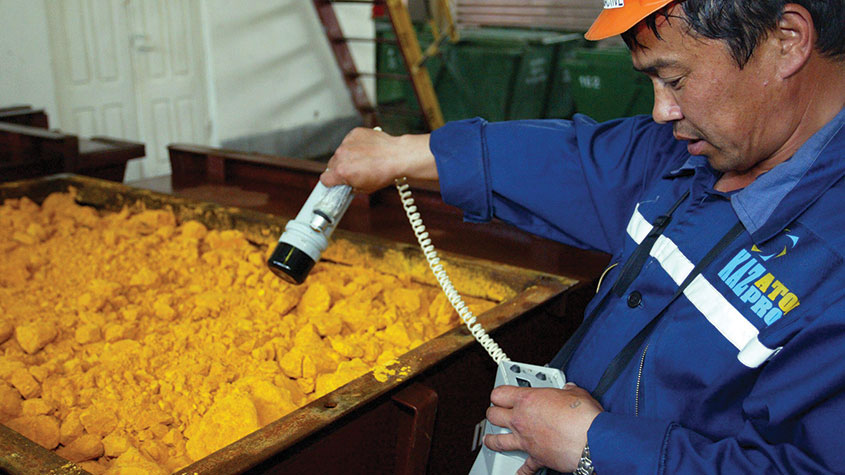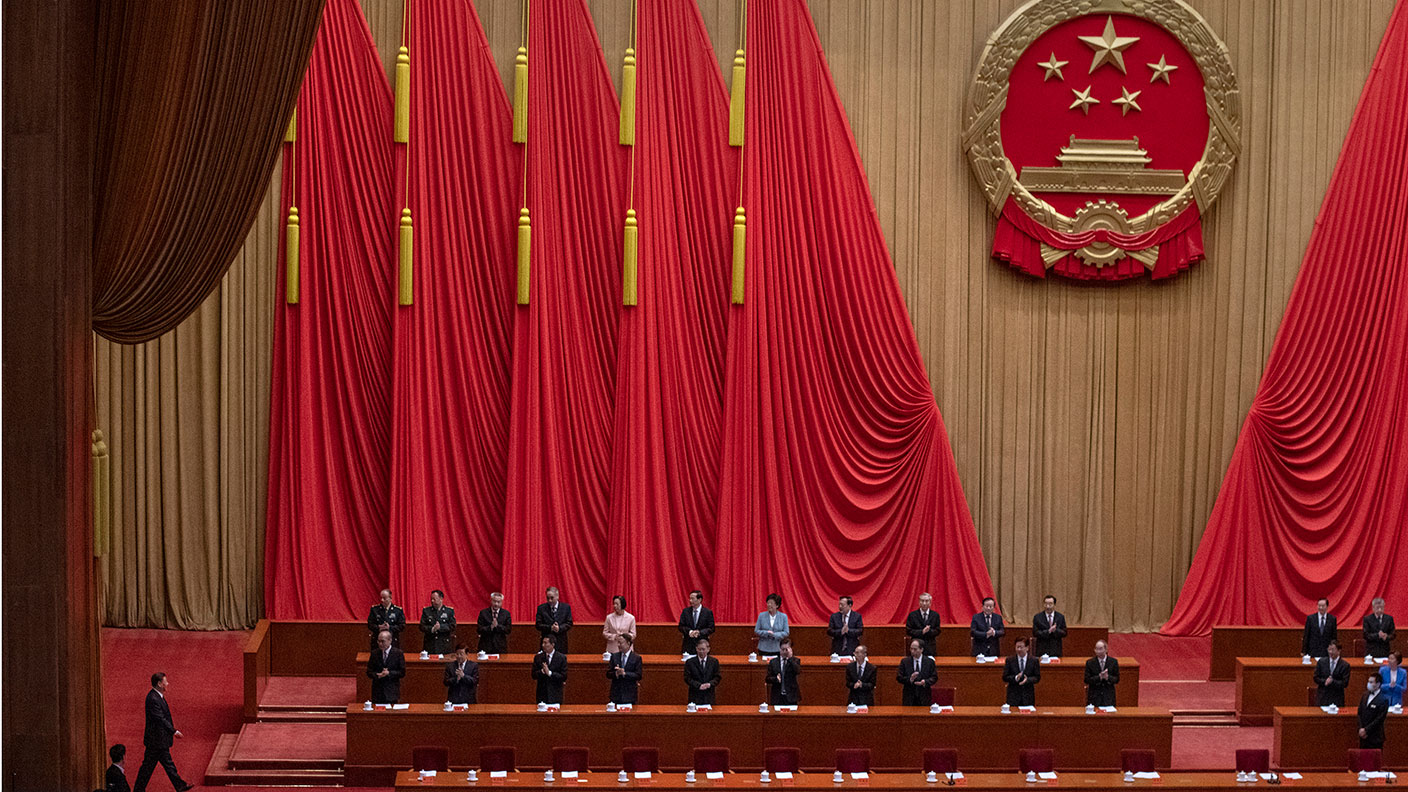
The BlackRock World Mining Trust has been on a roller-coaster ride, but is recovering well.
Barely ten years ago the FTSE 100 index included 12 mining companies, none of which operated a single mine in the UK. That number is now down to five but, after a near-death experience a few years back, the sector is in rude health, generating strong cash-flow and raising dividends.
This roller-coaster ride has been mirrored by the £670m BlackRock World Mining Trust (LSE: BRWM), which, after five years of negative performance, returned 100% in 2016 and 24% in 2017. The net asset value (NAV, the value of the underlying portfolio) has more than doubled since the end of 2015, but is still less than half of what it was at the end of 2010. "It's still early in the sector's cyclical recovery," says Evy Hambro, co-manager, "with mining equities pricing in commodity prices well below current spot prices, and investors as underweight as [they were] at the sector low."
MoneyWeek
Subscribe to MoneyWeek today and get your first six magazine issues absolutely FREE

Sign up to Money Morning
Don't miss the latest investment and personal finances news, market analysis, plus money-saving tips with our free twice-daily newsletter
Don't miss the latest investment and personal finances news, market analysis, plus money-saving tips with our free twice-daily newsletter
Miners have learned lessons
A few years ago, things looked very different. Prior to 2011, surging demand from China had driven metal prices sky-high. Mining companies had committed themselves to significant new projects and embarked on major acquisitions. But when demand growth tailed off and new supply came through, metal prices fell sharply. Falling cash flow made debts unaffordable, projects were abandoned and dividends cut.
BRWM's attempt to diversify by investing in royalty streams backfired when London Mining went bankrupt in 2014, wiping 10% off the value of the fund's assets. The share price, which had already fallen with the broader sector, plunged further, and confidence in the trust tumbled.
However, the fund has seen a notable recovery. Metal prices have bounced and, with them, the cash flow and profits of the surviving miners. With new projects abandoned and company managements learning their lessons about capital discipline, supply is constrained while demand is firm.
Global inventories have fallen, underpinning prices. The sources of demand are changing, but metal demand continues to grow, though at a slower rate than the global economy. However, the growth of the electric-car business is expected to boost demand for lithium, cobalt and rare earth metals greatly.
Investors' scepticism is based on doubts about the sustainability of growth in China, a distrust of mining management and low confidence that margins will be maintained. Yet growth in China remains above 6% per year and, in order to reduce pollution, it is cutting back on domestic supply. Global mining companies have cut capital expenditure by 45% and abandoned ambitions for growth, while continuing to raise productivity.
Risky buys have paid off
The team's increasing confidence is reflected in the fact that it has added to its investments in the riskier companies and has borrowed up to 15% of its NAV for investment purposes. This offsets the 11% of NAV invested in corporate debt yielding 7%-8%. A $12m investment five years ago in a royalty on Avanco's Antas mine in Brazil has paid off, doubling in value to 2.3% of the fund, and paying back $6m.
The success has prompted OZ Minerals to bid for the company, providing an extra benefit to the trust through its shareholding, accounting for 2.4% of NAV. Finally, few investors would have had the courage to buy Vale, the Brazilian iron-ore miner, at its low in early 2016. This now accounts for 8% of NAV, having risen by 70% last year.
The fund's returns were 3% ahead of the Global Mining index last year, despite the dull performance of the 13% of the fund invested in gold mining and 8% in silver and diamond mines. Invest now, but be prepared to take profits when euphoria returns.
Activist watch
ThyssenKrupp AG's chief Heinrich Hiesinger is "facing the fight of his career" as two activist investors take aim at the German industrial giant, says Bloomberg. Activist fund Elliott Management, which is building a stake in the company, wants to oust the 57-year-old CEO for failing to guide the company through a turnaround.
ThyssenKrupp has faced falling revenue and rising costs, and has been criticised by shareholders, including Swedish fund Cevian Capital, for its complicated structure, which spans submarines, lifts and food packaging. Another major gripe is a proposal to merge the European steel business with Tata, a key part of Hiesinger's turnaround plan. Shares in the company rose by nearly 10% on the news of Elliott's purchase.
Short positions more woe for Woodford
Wealth manager Charles Stanley has taken Neil Woodford's Equity Income Fund off its list of "high-conviction" investment ideas, says Lucy White in City AM. The fund had been on the list since 2015, but the group had started to "harbour some concerns" that overall performance from the equity income fund may become increasingly affected by a "relatively small number of existing high-growth and earlier-stage businesses in the portfolio". The move comes just a month after Woodford's fund was shunted out of the Investment Association's equity income sector for failing to yield enough in comparison with the FTSE All-Share index.
Legal & General Investment Management has developed a proprietary index that will form the basis of its first gender-oriented fund, says Natalie Kenway in Investment Week. The index will score and rank the top 350 UK-listed companies based on four gender diversity measures, with companies expected to reach a minimum of 30% representation of women in each measure. The L&G Future World Gender in Leadership (Girl) UK index fund will charge an annual fee of 0.5%.
Asset manager Janus Henderson plans to close its UK Strategic Income unit trust due to concerns that its assets under management of just £10.8m no longer make it viable, says Mike Sheen in Investment Week. Investors must decide whether to switch to another fund or trust, redeem their shares prior to the closure date, or do nothing and receive pro-rata proceeds from the liquidation.
Get the latest financial news, insights and expert analysis from our award-winning MoneyWeek team, to help you understand what really matters when it comes to your finances.

Max has an Economics degree from the University of Cambridge and is a chartered accountant. He worked at Investec Asset Management for 12 years, managing multi-asset funds investing in internally and externally managed funds, including investment trusts. This included a fund of investment trusts which grew to £120m+. Max has managed ten investment trusts (winning many awards) and sat on the boards of three trusts – two directorships are still active.
After 39 years in financial services, including 30 as a professional fund manager, Max took semi-retirement in 2017. Max has been a MoneyWeek columnist since 2016 writing about investment funds and more generally on markets online, plus occasional opinion pieces. He also writes for the Investment Trust Handbook each year and has contributed to The Daily Telegraph and other publications. See here for details of current investments held by Max.
-
 ‘Why I have ditched my Help to Buy ISA for cash savings and the stock market’
‘Why I have ditched my Help to Buy ISA for cash savings and the stock market’Without the 25% bonus, my Help to Buy ISA is effectively redundant, says MoneyWeek writer Sam Walker.
-
 Is your inheritance tax allowance cut if you sell to downsize or sell your home to pay for care?
Is your inheritance tax allowance cut if you sell to downsize or sell your home to pay for care?Downsizing relief is a little-known benefit that could save your loved ones tens of thousands of pounds in inheritance tax after you’ve died.
-
 These 2 stocks are set to soar
These 2 stocks are set to soarTips The returns from these two aluminium and tin stocks could be spectacular when the commodity cycle turns says David J Stevenson.
-
 The best ways to buy strategic metals
The best ways to buy strategic metalsTips Weaker prices for strategic metals in the alternative-energy sector are an investment opportunity, says David Stevenson. Here, he picks some of the best ways to buy in.
-
 A lesson for investors from a ill-fated silver mine
A lesson for investors from a ill-fated silver mineAnalysis Mining methods may have changed since the industry’s early days, but the business hasn’t – digging ore from the ground and selling it at a profit. The trouble is, says Dominic Frisby, the scams haven't changed either.
-
 The natural resources industry is in a tight spot – which is bad news for the rest of us
The natural resources industry is in a tight spot – which is bad news for the rest of usOpinion The natural resources industry is in a bind. We need it to produce more energy and metals, but it has been starved of investment, plagued by supply chain issues, and hobbled by red tape. That’s bad news for everyone, says Dominic Frisby.
-
 How to invest in the copper boom
How to invest in the copper boomTips The price of copper has slipped recently. But that’s temporary – the long-term outlook is very bullish, says Dominic Frisby. Here, he explains the best ways to invest in copper.
-
 Why investors should consider adding Glencore to their portfolios
Why investors should consider adding Glencore to their portfoliosTips Commodities giant Glencore is well placed to capitalise on rising commodity prices and supply chain disruption, says Rupert Hargreaves. Here’s why you should consider buying Glencore shares.
-
 How to invest in the multi-decade boom in industrial metals
How to invest in the multi-decade boom in industrial metalsTips The price of key industrial metals has already begun to rise. The renewable energy transition will take them higher, says David Stevenson. Here's how to profit.
-
 Avoid China’s stockmarket – here’s what to invest in instead
Avoid China’s stockmarket – here’s what to invest in insteadOpinion China’s stockmarket is not a good place for investors to be. But you can't just ignore the world's second-largest economy, says Dominic Frisby. Here, he picks an alternative China play.
